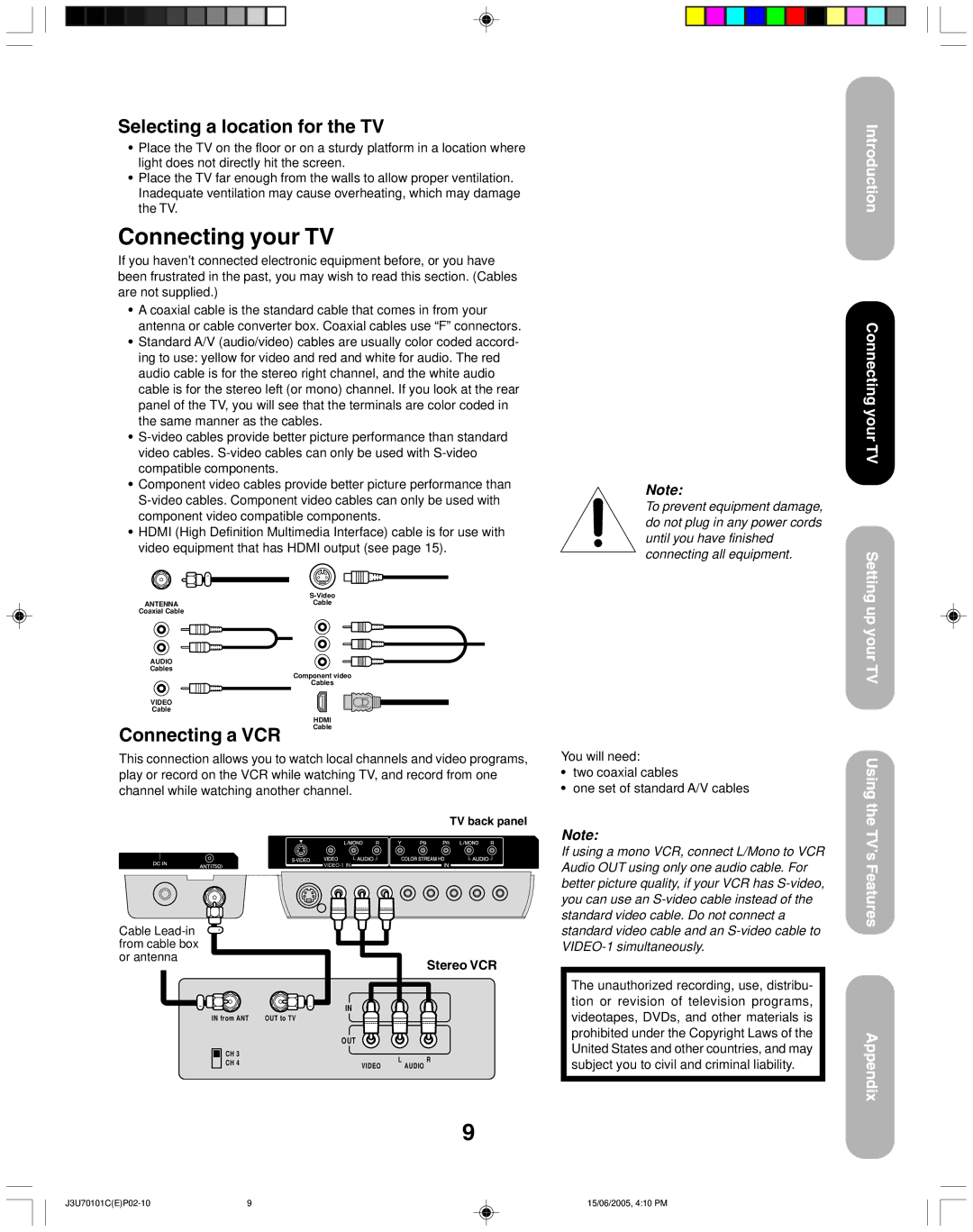
Selecting a location for the TV
•Place the TV on the floor or on a sturdy platform in a location where light does not directly hit the screen.
•Place the TV far enough from the walls to allow proper ventilation. Inadequate ventilation may cause overheating, which may damage the TV.
Connecting your TV
If you haven’t connected electronic equipment before, or you have been frustrated in the past, you may wish to read this section. (Cables are not supplied.)
•A coaxial cable is the standard cable that comes in from your antenna or cable converter box. Coaxial cables use “F” connectors.
•Standard A/V (audio/video) cables are usually color coded accord- ing to use: yellow for video and red and white for audio. The red audio cable is for the stereo right channel, and the white audio cable is for the stereo left (or mono) channel. If you look at the rear panel of the TV, you will see that the terminals are color coded in the same manner as the cables.
•
•Component video cables provide better picture performance than
•HDMI (High Definition Multimedia Interface) cable is for use with video equipment that has HDMI output (see page 15).
ANTENNACable
Coaxial Cable
AUDIO
Cables
Component video
Cables
Note:
To prevent equipment damage, do not plug in any power cords until you have finished connecting all equipment.
Introduction
Connecting your TV
Setting up your TV
VIDEO
Cable
Connecting a VCR
HDMI Cable
This connection allows you to watch local channels and video programs, play or record on the VCR while watching TV, and record from one channel while watching another channel.
TV back panel
You will need:
•two coaxial cables
•one set of standard A/V cables
Note:
If using a mono VCR, connect L/Mono to VCR Audio OUT using only one audio cable. For better picture quality, if your VCR has
Using the TV’s Features
Cable
IN from ANT | OUT to TV |
CH 3
CH 4
Stereo VCR
IN
OUT
LR
VIDEO AUDIO
standard video cable and an
The unauthorized recording, use, distribu- tion or revision of television programs, videotapes, DVDs, and other materials is prohibited under the Copyright Laws of the United States and other countries, and may subject you to civil and criminal liability.
Appendix
9
9 | 15/06/2005, 4:10 PM |
